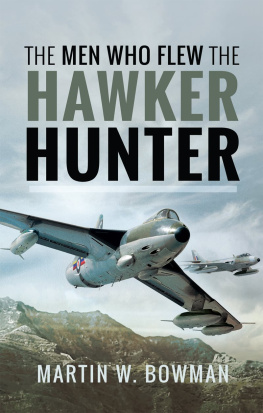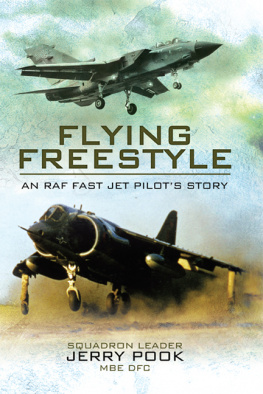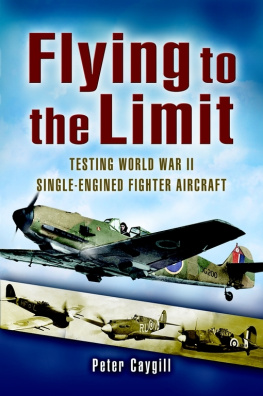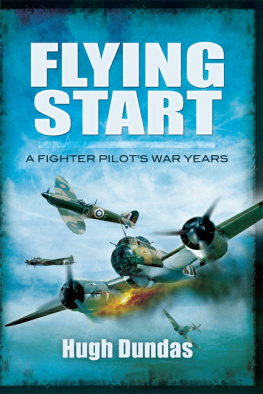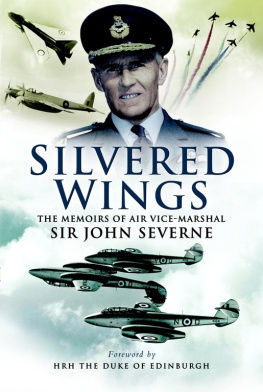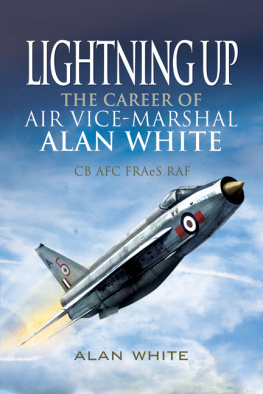First published in
Great Britain in 2006
By Pen & Sword Aviation
An imprint of Pen and Sword Books Ltd
47 Church Street
Barnsley
South Yorkshire
S70 2AS
England
Copyright Brian Mercer 2006
ISBN 1 84415 392 4
The right of Brian Mercer to be identified as the Author of this Work has been asserted by him in accordance with the Copyright, Designs and Patents Act 1988.
A CIP record for this book is available from the British Library.
All rights reserved. No part of this book may be reproduced or transmitted in any form or by any means, electronic or mechanical including photocopying, recording or by any information storage and retrieval system, without permission from the Publisher in writing.
Typeset in the UK by Mac Style, Nafferton, E. Yorkshire.
Printed and bound in the UK by CPI UK.
Pen & Sword Books Ltd incorporates the imprints of Pen & Sword Aviation, Pen & Sword Maritime, Pen & Sword Military, Wharncliffe Local History, Pen & Sword Select, Pen & Sword Military Classics and Leo Cooper.
For a complete list of Pen & Sword titles please contact
Pen & Sword Books Limited
47 Church Street, Barnsley, South Yorkshire, S70 2AS, England
E-mail: enquiries@pen-and-sword.co.uk
Website: www.pen-and-sword.co.uk
ADF (Automatic Direction Finder)
A cockpit instrument that gives the bearing to a radio beacon or broadcast station. Also called a Radio Compass.
AOC
Air Officer Commanding
AI (Airborne Interception)
Radar set fitted to night fighters, eg A1 Mark 10, A1 Mark 21.
ASV (Air/Surface Vessel)
Radar set carried by Coastal Command aircraft to search for ships.
AVPIN (ISO-Propyl-Nitrate)
Used in the starting system on some military jet engines. This liquid is squirted into a combustion chamber and ignited. The resulting explosion then spins the engine
Balbo
A large formation named after the Italian General Balbo, famous for leading large formations of aircraft in the 1930s.
Battle Formation
A loose formation used by fighters in a combat area. Amazingly in the 1960s we still used the tactics first developed by the Luftwaffe Condor Legion during the Spanish Civil War. Hard lessons learned during the Battle of Britain caused the RAF to adopt the German system.
Bought The Farm
An american expression meaning to have crashed or met with disaster.
CRDF (Cathode Ray Direction Finder)
An instrument like a TV screen situated in the air traffic control tower which gives an instant bearing to an aircraft transmitting on VHF (very high frequency).
DME (Distance Measuring Equipment)
A cockpit instrument which gives the distance in nautical miles to which ever beacon is tuned in. It had line of sight range and was reasonably reliable.
Dutch Roll
A combination of roll and yaw to which swept-wing aircraft are susceptible, particularly at high altitude. This phenomenon can become uncomfortable or even dangerous if allowed to persist. The corrective action is either to descend to a lower altitude or to apply a sharp aileron input against the rising wing. All modern swept-wing aircraft are fitted with a yaw damper which stops this from happening.
Forward Radar Control Post
Mobile radar station which could tell an aircraft flying at a known height and airspeed, when to release its bombs to hit a target.
Finger Four
Tactical formation flown by four fighters, positioned like the fingertips of an outstretched hand.
GCA (Ground Controlled Approach)
Airfield radar which enables the controller to give radio instructions to a pilot to keep him lined-up with the runway and on the glideslope. The effectiveness of this aid was dependent on the skill of the controller and the pilot. It was out standard method of recovering fighters in bad weather and its use had proved vital during the Berlin Airlift.
GCI (Ground Controlled Interception)
The air defence radars were called GCI stations.
GEE
A navigation aid developed for Bomber Command during World War Two. Parabolic position line are superimposed on a chart and a navigator could determine his position by interpreting the signals from a master and two slave transmitting stations on a cathode-ray tube installed in the aircraft.
Hap Arnold Scheme
Name given to the scheme for training RAF pilots in the USA before America entered World War Two. Named after the commander of the US Army Air Corps.
ILS (Instrument Landing System)
Airfield radar that transmitted signals to an aircraft on the approach and allowed the pilot to make corrections to his flight path to stay on the glideslope and lined-up with the runway. The information was given to the pilot usually by a flight director instrument and a skilled pilot could follow the flight director commands down to about 100 ft. above the ground. It could be a demanding task on a wet and windy night at Kai Tak airport, Hong Kong, in conditions of bad turbulence and constantly changing drift.
Mach Number
Aircraft speed expressed as a percentage of the speed of sound. For example a Mach number of 0.85 equals eighty five per cent of the speed of sound.
QFI (Qualified Flying Instructor).
SBAC (Society of British Aircraft Constructors).
SSB (Single Side Board)
Efficient type of HF (high frequency) radar for long-range radio communications.
Telescramble
A direct land line from the radar station to the pilot in his cockpit. This line disconnects when the aircraft moves forward. A hunter pilot sitting in his cockpit on the operational readiness platform at the end of the runway with his engine off, could be airbourne sixty seconds after the order to scramble.
VOR (VHF Omni Range)
A radio beacon on very high frequency that gives the pilot a bearing to the beacon. Line-of-sight range and more accurate and reliable than ADF.
Wet Lease
The leasing of an aircraft complete with cockpit crew is a wet lease. A lease of an aircraft only, is a dry lease.
This eminently readable book will appeal to all those with a real interest in aviation. The author, Brian Mercer, has spent a lifetime flying both military and civil aircraft, and in the following pages he recounts his experiences in a style that transports the reader into the exciting and exhilarating environment of the air; appealing to young and old alike and reflecting the authors passion for flying and his innate sense of humour.
The book is essentially divided into two parts: the first focuses on Mercers 18 years with the Royal Air Force, whilst the second covers his 30 years as an airline pilot. I knew him well during the first period when we served together three times, notably with the RAFs famous Hunter formation aerobatic teams of Nos 111 and 92 Squadrons (the Black Arrows and the Blue Diamonds). Brian was an outstanding fighter pilot and squadron commander, leading by example and with a flair that earned both respect and admiration. It is not surprising, therefore, that he sees the highlight of his aviation career as his time in command of No 92 Squadron.
The author gives a vivid and accurate account of life in the RAF in the early post World War 2 period. He describes how it took some time for the rather gung-ho, live-for-today wartime fighter pilot culture, which was partially to blame for the RAFs relatively high accident rate of the 1950s, to evolve into one that was more measured and responsible, and, in my view, more effective. A further reason for the RAFs poor flight safety record at that time was the lack of experience on jet aircraft of many of the more senior pilots and flying instructors; some indeed finding it difficult to transition from high-performance piston-engined fighters such as the Spitfire and Tempest to the jet-engined Meteor and Vampire.


